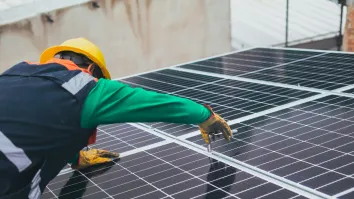
Coal transaction costs to dip after China's tariff scheme overhaul
Price drops could go as high as 13% below the current on-grid tariff.
China now aims to overhaul its coal-fired electricity pricing terms in which the new price of coal-fired electricity supplied to the grid will comprise a benchmark price plus a variable element with a 10% ceiling and a 15% floor, with the aim of having a market-driven approach to price coal-fired electricity, and to further reduce end-use electricity tariffs to cut manufacturing costs and boost the economy.
According to Wood Mackenzie, softer coal spot prices and long-term contract price drops could increase coal-fired electricity market transactions in 2020 and depress transaction prices. This corresponds to the situation in 2017, when coal-fired power plants were forced to enter the market.
Also read: Coal tariff scheme phaseout to bite profits of Chinese gencos
But the 2020 price drop will be more moderate. The firm said that the average transaction price will fall to around $46.59 (RMB330) per MWh, but this will still be about $2.12 (RMB15)/MWh above the breakeven price. In 2021, the market price should rebound, Wood Mackenzie said.
Frank Yu, principal consultant at Wood Mackenzie, said, "The magnitude of the market transaction price drop is equivalent to 13% below the current on-grid tariff, so just within the 15% floor. Transaction data for six provinces in 2018 shows the reductions already exceed 15% and many others are close to 10%. But we do expect regional differentiation in transaction prices. Export-oriented coastal demand centres could have higher reductions to help slash manufacturing costs, while inland resource-rich provinces could cut tariffs by less given their already low generation costs."
Although renewables pricing has shifted to competitive auctions (compared to feed-in tariff previously), the coal on-grid tariff remains a key reference when evaluating the economics of renewables projects.
“Whilst projects sanctioned in 2020 and earlier will largely be unaffected, subsidy-free or low-subsidy projects approved from 2021 onwards will face greater uncertainty. With limited-to-no subsidies, new projects will be highly sensitive to coal on-grid tariffs,” Wood Mackenzie said.
Lower coal tariffs in 2020 will mean lower revenue and lower project profitability. “Furthermore, variable coal on-grid tariffs make calculating project economics more difficult and this may deter many investors. The renewables industry will have to figure out how to further depress costs to catch up with lower coal on-grid tariffs,” the firm added.
Yu Zhai, senior consultant at Wood Mackenzie, said, "A potential outcome of a lower on-grid tariff is that China may relax its restrictions on coal imports. Since 2016, the price competitiveness of seaborne coal has played a key role in the rise of China’s coal imports. Recently, seaborne imports have been as much as $14.12 (RMB100) per ton (or 15%) cheaper than domestic production. Profitability pressure will push coal generators to blend more seaborne imports to lower weighted average fuel costs. As a result, generators may petition the government to review the existing import restrictions and allow larger quotas of seaborne coal imports.”



















 Advertise
Advertise







